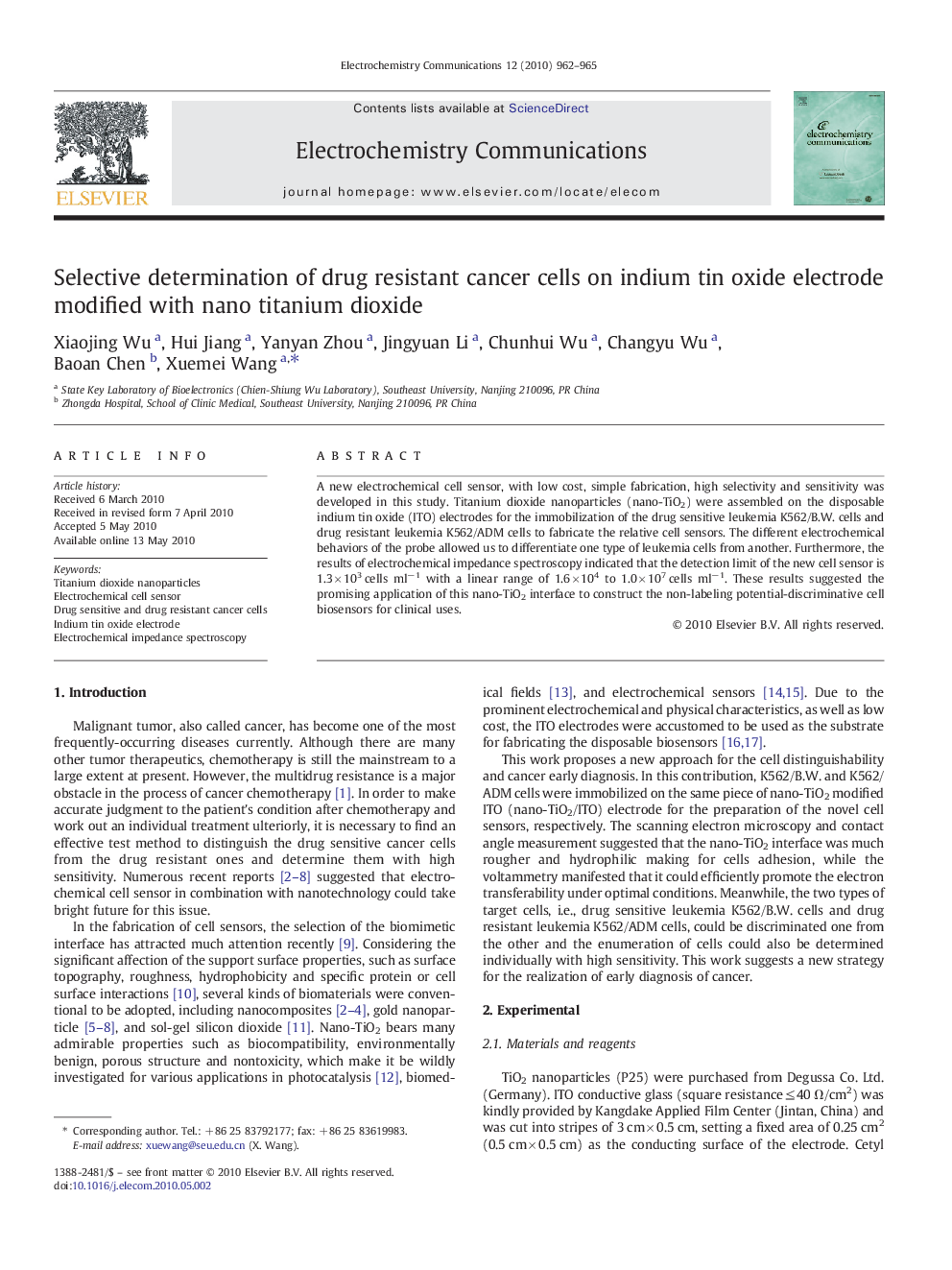| Article ID | Journal | Published Year | Pages | File Type |
|---|---|---|---|---|
| 180646 | Electrochemistry Communications | 2010 | 4 Pages |
A new electrochemical cell sensor, with low cost, simple fabrication, high selectivity and sensitivity was developed in this study. Titanium dioxide nanoparticles (nano-TiO2) were assembled on the disposable indium tin oxide (ITO) electrodes for the immobilization of the drug sensitive leukemia K562/B.W. cells and drug resistant leukemia K562/ADM cells to fabricate the relative cell sensors. The different electrochemical behaviors of the probe allowed us to differentiate one type of leukemia cells from another. Furthermore, the results of electrochemical impedance spectroscopy indicated that the detection limit of the new cell sensor is 1.3 × 103 cells ml−1 with a linear range of 1.6 × 104 to 1.0 × 107 cells ml−1. These results suggested the promising application of this nano-TiO2 interface to construct the non-labeling potential-discriminative cell biosensors for clinical uses.
